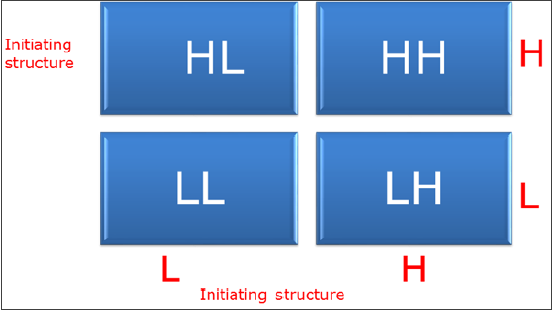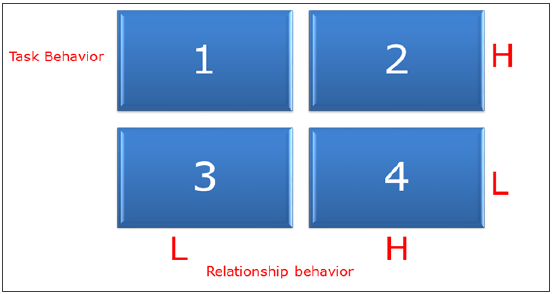
- Organizational Behavior - Home
- OB - Introduction
- OB - Determinants
- OB - Concepts
- OB - Scope
- OB - Functions of a Manager
- OB - Models
- OB - Learning
- OB - Personality
- OB - Theories of Personality
- OB - Perception
- OB - Motivation
- OB - Theory X & Theory Y
- OB - Groups in Organization
- OB - Group Decision Making
- OB - Leadership
- OB - Theories of Leadership
- OB - Conflict Management
- OB - Culture
- OB - Change
- OB - Development
Theories of Leadership
Behavioral Theory
This theory explains the effectiveness of leadership. According to this theory, leadership has two qualities i.e., initiating structure and consideration. These qualities are tested with higher and lower levels with proper intersection of each other.
Initiating Structure
It is the level up to which a leader is task oriented and directs the employee towards achieving a goal. In this case, the leader gives instruction, makes plan and schedules work activities.
Consideration
It is the level up to which a leader is concerned with the sub-ordinates, ideas and feelings. Considerate leaders are friendly, they show concern for sub-ordinates well-being and satisfaction.

This type of leadership is achieved by performance and is found to be effective. But it is not the best way as situational factors are not taken into consideration.
Contingency Theory
According to this theory, propounded by Paul Hersey and Ken Blanchard, believes the effectiveness of a leader is dependent on the action or readiness of his followers. By readiness we mean the extent to which the followers are able and willing to achieve the goal.
This theory is explained on the basis of four cases.

Case 1 − In case one, we have high relationship behavior and low task behavior. The leader motivates the followers and helps in decision making. Not much productivity can be seen in this case but the sense of togetherness is high.
Case 2 − In case two, we have high relationship behavior as well as high task behavior. In this combination, the leader explains the decision and helps to build confidence of the employees. In this case, productivity as well as loyalty towards the leader is more.
Case 3 − In case three, we have a combination of low relationship behavior and low task behavior. Here we see that the leader delegates the responsibility of decision making to the followers. In this case, there is poor communication as well as poor production.
Case 4 − Here we deal with a combination of low relationship behavior and high task behavior. The leader gives specific direction and supervises the performance. This theory is effective only if the leaders change their style irrespective of the readiness of the followers.